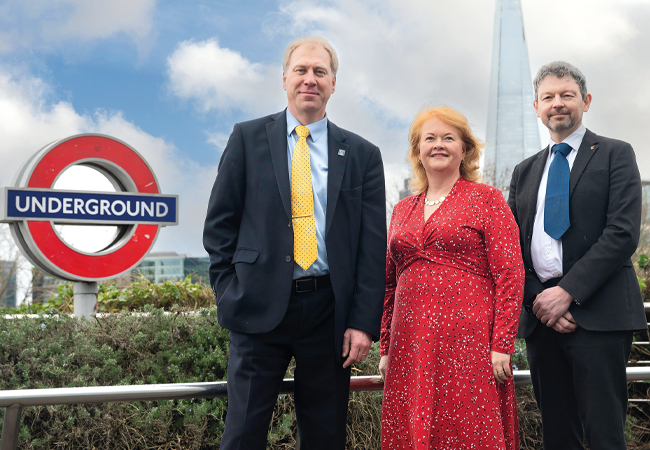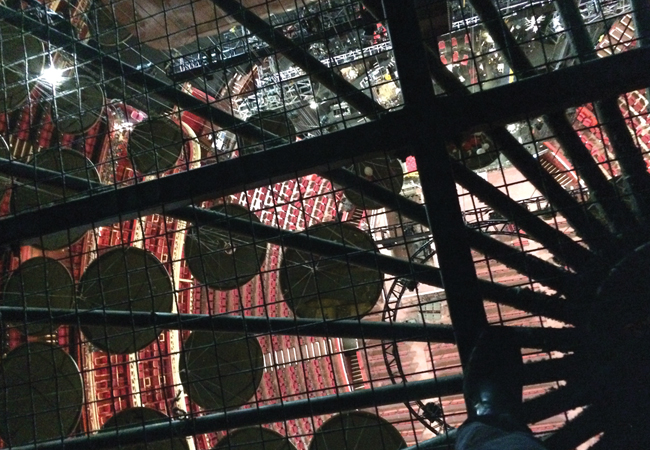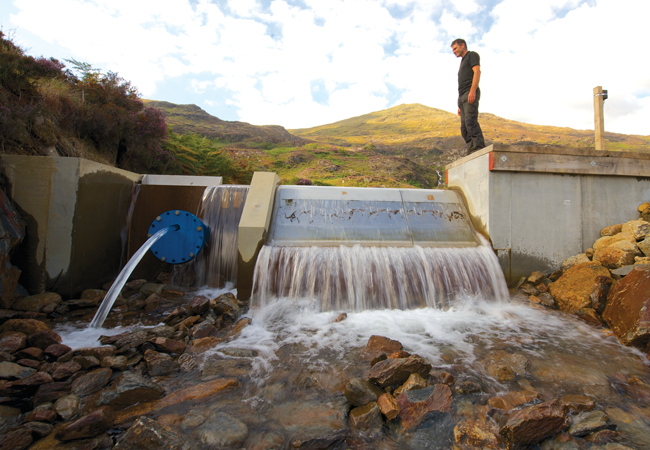
What do Adnams Brewery, the National Trust and Cancer Research UK have in common? They are all members of Fit for the Future, a UK-based network of around 500 people – from 81, mostly not-for-profit, organisations – that share ideas on the best ways to cut energy use, reduce their impact on the environment and, ultimately, to save money.
Fit for the Future came into being five years ago, after the National Trust won a Gold Award from sustainability charity Ashden for its pioneering work in energy saving and green energy generation on its projects in Wales. In two years, these initiatives almost halved the Trust’s energy use and carbon dioxide (CO2) emissions in the country, as part of its drive to become energy self-sufficient by 2020.
At the time of the win, Keith Jones, and Paul Southall – the National Trust’s environmental practice advisers in Wales – were blogging about their experiences in trying to cut energy use in historic mansion buildings. They explained which of their initiatives were most effective and which were less so.
The blog generated numerous questions and comments, mostly from people in similar organisations who were looking to undertake comparable projects. It was apparent there was a need for a solution-sharing network to link practitioners.
Collective knowledge
The fundamental rule of membership is that members cannot benefit commercially from being involved in the network – so no consultants, installers or manufacturers are allowed to join.
Chloe Hampson, Fit for the Future’s manager, says the advantage of a network for not-for-profit organisations is that they don’t have to keep commercial secrets.
‘It’s all about encouraging practitioners to share knowledge, understanding and best practice,’ she says.
The group functions on the principle that – more often than not – solutions to an organisation’s energy-saving objectives probably already exist.
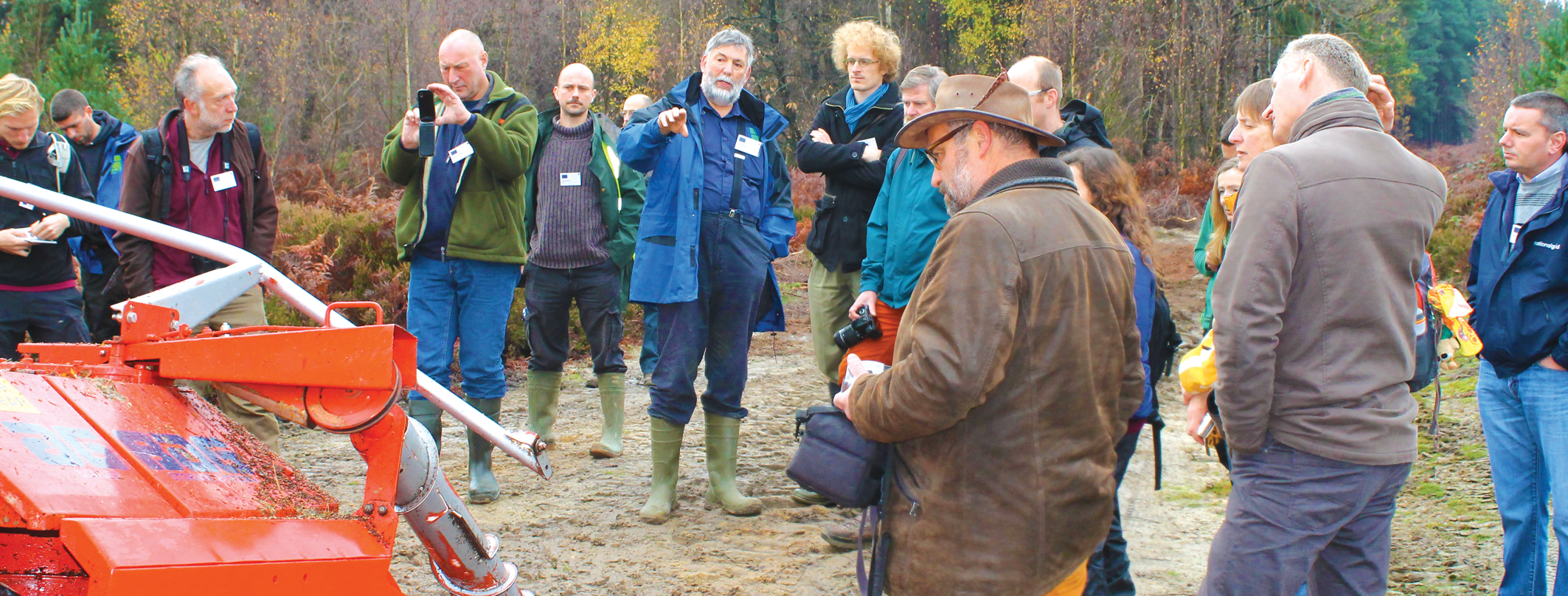
Site visit for members of the Fit for the Future network
Energised by its Ashden Gold Award and the responses to the advisers’ blog, the National Trust set up the Fit for the Future group in November 2013, in partnership with Ashden. Its remit was to help not-for-profit organisations learn from each other to minimise their energy usage.
‘By tapping into the collective knowledge of hundreds of environmental practitioners from more than 80 organisations, our members are able to find solutions quickly, and to achieve greater success,’ says Hampson, who describes her role with the group as similar to that of an ‘environmental dating agent’.
This can involve arranging bespoke liaisons. She may, for example, be contacted by a property manager – tasked with making an estate carbon neutral – who wants to be put in touch with someone who has already had success in achieving a similar goal.
The Geffrye Museum in east London is undergoing an £18m capital development programme, which includes the construction of new conference facilities, galleries, storage areas and a library. Also included in the project is a thermal labyrinth to offer passive means of tempering the fresh air supply to a new lecture theatre, which forms part of the conference facility. ‘I was unfamiliar with some of the proposals the building services engineers were coming up with, including the thermal labyrinth,’ says Lisa Moore, director of capital projects and operations at the museum. ‘I wanted to know how easy it would be to operate and maintain once the contractor and consultants had gone, so the [Fit for the Future] network put me in touch with Tom Heel, at Oxford University, who is using thermal labyrinths in lecture theatres.’ Moore says she was able to get in touch with Heel directly, to ask his opinion on the appropriateness of the technology. ‘Being able to ask a peer – rather than a consultant – is helpful, because they are managing the day-to-day running of the system, and will have an eye on energy consumption, costs and ensuring the technology does the job it is intended to do,’ she says. ‘He’s not trying to sell me anything, but will give me an honest opinion.’ Moore has also used the network for product information. ‘I was looking for the best product to monitor our energy use automatically, to identify how energy is being used and peaks and troughs throughout the day and year. The network put me in touch with a user who had selected a system after a comprehensive tender process.’ In addition to seeking advice, Moore has been able to offer it, too. Oxford House, a community and arts centre in nearby Bethnal Green, was put in touch with the Geffrye because it was going through a capital development programme, and the chief executive wanted to know how the museum managed its maintenance contracts – and which contractors it used. ‘I’ve been down to see him to chat things through; I have put him in contact with some people and he’s put me in touch with others,’ Moore says.Passive cooling at the Geffrye Museum
She might also be approached by a facilities manager seeking advice and guidance on maintaining and operating a newly installed biomass boiler. ‘Fit for the Future is about putting these people in touch with others who can help them,’ Hampson says.
A key aspect of the network is ‘peer consultancy’, whereby members who have just completed a project offer to visit another member’s site to share their experiences and offer advice and suggestions (see panel, ‘Improving energy efficiency at Lambeth Palace’).
Not reinventing the wheel
‘The network is all about site visits, events and sharing knowledge of what has and hasn’t worked for a member’s organisation, to ensure no-one is reinventing the wheel when it comes to developing environmental solutions,’ says Hampson.
An example of how Fit for the Future has already proved its worth is when the National Trust was considering installing a marine source heat pump in Wales. Through the network, the Trust learned that the Royal National Lifeboat Institution (RNLI) had completed a similar project, so engineers from both organisations were able to get together and share their knowledge.
As a result of this support, the National Trust installed a 300kW marine source heat pump at Plas Newydd House, on Anglesey, saving itself about £40,000 a year in energy costs, as well as lowering its carbon emissions significantly.
Similarly, the National Trust has shared its experience of mini hydro-electricity schemes with British Waterways, by hosting a visit to one of its schemes in Snowdonia. British Waterways – which is responsible for maintaining 2,000 miles of historic inland waterways in England and Wales – is now carrying out a hydro-electricity feasibility study on one of its canals.
Improving energy efficiency at Lamberth Palace
Lambeth Palace – the official home of the Archbishop of Canterbury – wanted to make significant improvements to the energy performance of its buildings.
The palace operates as an office, library, place of worship, gallery and family home, which meant estate manager Quentin Padgett faced some unique challenges.
So the Fit for the Future network organised a peer-consultancy visit to the Palace. This enabled Padgett’s equivalents from the National Trust, Historic England and the Church of England’s Shrinking the Footprint campaign to tour the site and offer advice, based on their experiences of improving energy use in a range of heritage buildings.
As a result of the visit, the Lambeth team was able to develop a series of steps to get it started on its journey. The temporary loan of monitoring equipment also allowed an energy profile of the palace to be created. Its priority now is to gather data to give a picture of how the site is used at various times of the day and on different days.
The peer consultants were also able to offer a few more unusual energy-improvement tips – such as draught-proofing traditional windows using black plasticine.
Over the coming months and years, Lambeth Palace and the Church of England will be working to become climate-friendly, resilient and climate-change adaptive. Working through Fit for the Future should help them reach their goals more quickly and with greater success.
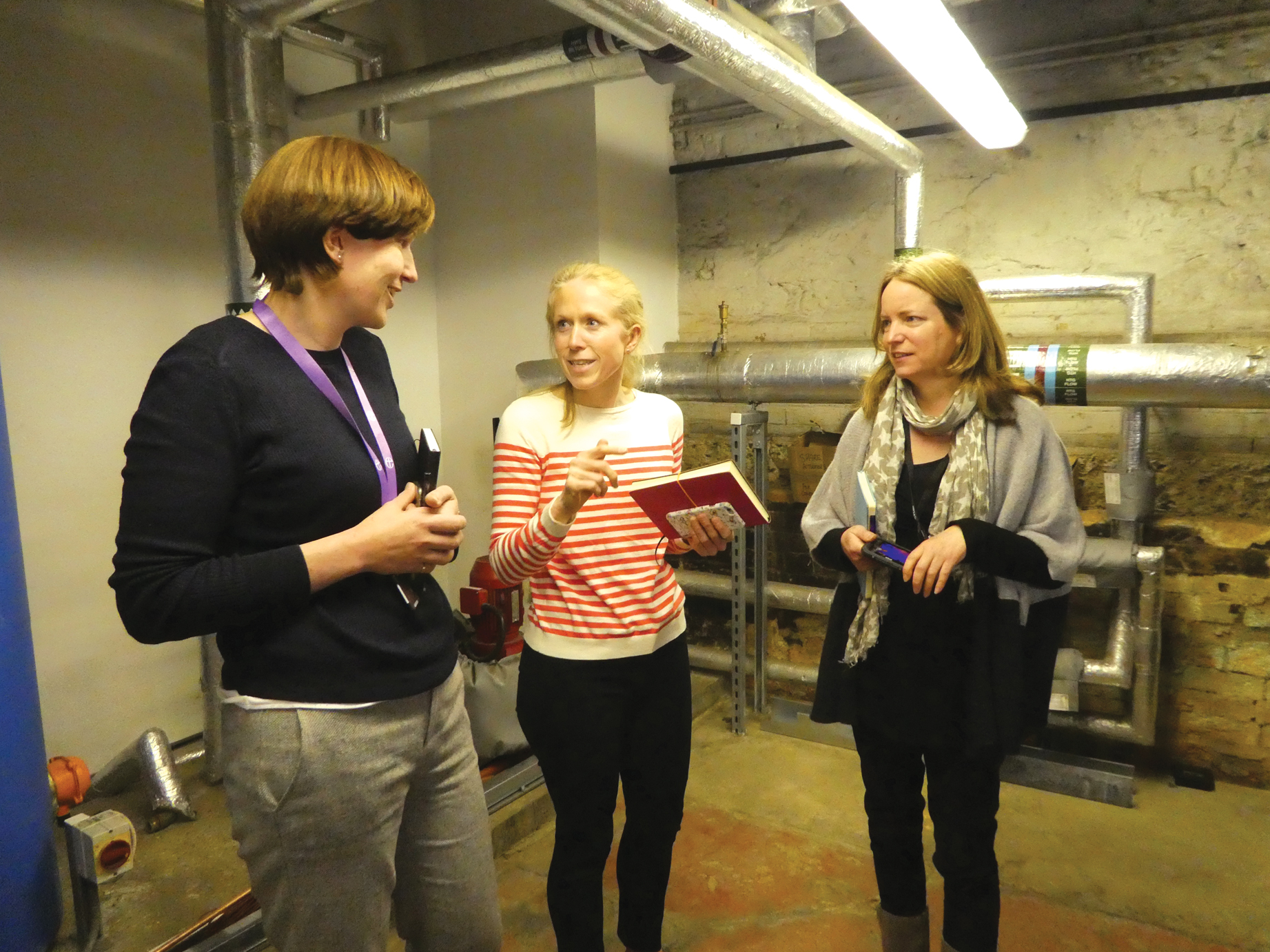
The Lambeth Palace plant room
Fit for the Future is about sharing information and learning; members do not have to agree to energy-reduction targets or anything that would impose additional demands on their time. They do, however, have to submit annual energy data to the network, so that it can keep track of its successes.
In 2016, Fit for the Future’s members consumed 764.6GWh of energy, while energy-conserving initiatives saved 11.8GWh – which, the network claims, equates to an impressive carbon-emissions reduction of 4,144 tonnes.
The diverse range of organisations that make up the group also generated 32.1GWh of renewable energy – 10.3GWh more than the previous year, and a sure sign of the network’s success. As a result of the energy savings, Fit for the Future members have collectively saved £1.2m on their energy bills – and, because they are mostly charities, these can add up to significant benefits.
For example, the energy savings made by Guide Dogs could pay for another two guide dogs, while the Wildfowl & Wetlands Trust could pay for the breeding programme for 17 endangered spoon-billed sandpipers, and Chatsworth House could restore 500m of dry-stone walling.
- To find out more, visit www.fftf.org.uk



